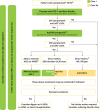Drug therapies in chronic heart failure: a focus on reduced ejection fraction
- PMID: 29626018
- PMCID: PMC6303445
- DOI: 10.7861/clinmedicine.18-2-138
Drug therapies in chronic heart failure: a focus on reduced ejection fraction
Abstract
There are multiple evidence-based drug treatments for chronic heart failure (HF), both disease-modifying agents and those for symptom control. The majority of the evidence base supports drugs used in HF with reduced left ventricular ejection fraction. The mainstay of disease modification involves manipulation of neurohormonal activation that occurs in HF. In addition to established angiotensin-converting enzyme inhibitors, beta blockers and mineralocorticoid receptor antagonists (MRAs), newer agents are now available such as the angiotensin receptor neprilysin inhibitors. Achieving the optimal drug regimen is complex and best performed by a specialist heart failure team. We aim to provide a comprehensive overview of contemporary drug therapies in chronic heart failure, as well as practical guidance for their use. There is a focus on treating patients with challenging comorbidities such as hypotension and chronic kidney disease (CKD), where a thorough understanding of drug therapy is essential. Multiple trials assessing the benefits of new therapies in HF, such as intravenous iron, are also ongoing.
© Royal College of Physicians 2018. All rights reserved.
Figures

References
-
- Fox KF. Cowie MR. Wood DA, et al. Coronary artery disease as the cause of incident heart failure in the population. Eur Heart J. 2001;22:228–36. - PubMed
-
- He J. Ogden LG. Bazzano LA, et al. Risk factors for congestive heart failure in US men and women: NHANES I epidemiologic follow-up study. Arch Intern Med. 2001;161:996–1002. - PubMed
-
- Redfield MM. Jacobsen SJ. Burnett JC, Jr, et al. Burden of systolic and diastolic ventricular dysfunction in the community: appreciating the scope of the heart failure epidemic. JAMA. 2003;289:194–202. - PubMed
-
- Braunschweig F. Cowie MR. Auricchio A. What are the costs of heart failure? Europace. 2011;13(Suppl 2):ii13–7. - PubMed
-
- Donkor A. McDonagh T. Hardman S. National heart failure audit April 2015 – March 2016. London:: Healthcare Quality Improvement Partnership; 2017.
Publication types
MeSH terms
Substances
LinkOut - more resources
Full Text Sources
Other Literature Sources
Medical
Research Materials
Miscellaneous

